
Event Report
On 30 June 2022, Singapore Hybrid-Integrated Next-Generation μ-Electronics (SHINE) centre held its
Industry Partnership Launch and Technical Seminar after one year of the establishment of centre. The
seminar themed on promoting pioneering insights and breakthroughs while supporting innovations and collaborations. The Day 1 event was open to the public, professors, staff, researchers and industry
collaborators at NUS College of Design and Engineering Campus with over 180 attendees. The guest
of honour, BG Ng Chad-Son, Deputy Secretary (Technology), Ministry of Defence, graced the event with
his presence.
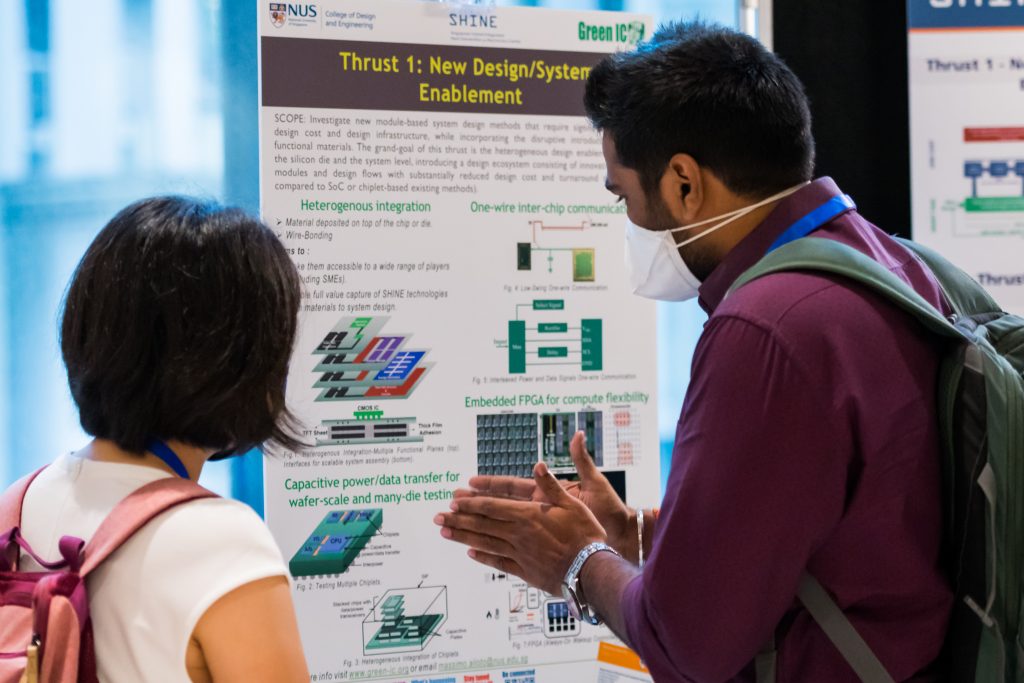
Prof Aaron Thean, Director of SHINE, opened the conference with a welcome address. Prof Thean outlined the motivation for establishing SHINE centre and its beliefs in research strategies specific to R&D and the research ecosystem that brings collaborative academic and industry partners across the semiconductor value chain to promote innovation through science and breakthrough to become the next “technology game-changer”. Finally, he celebrated the initial collaborations with a first-anniversary commemorative video put together for this partnership launch and inauguration event.
In the opening speech, BG Ng shared that flexible technology transforms the way we design and utilize consumer electronics and that setting up of the SHINE centre “could not have been more timely”.
SHINE was honoured to line up five distinguished speakers to deliver the keynote speeches. They were Dr Suresh Venkatesan, CEO of POET Technologies, Mr Guillaume Besnard, Innovation Technology Leader of SOITEC, Prof Philip Wong of Stanford University (Calinfornia), Prof Takao Someya of University of Tokyo and Dr Thomas J. Knisley, Seminconductor Chemist of Applied Materials.
Prof Ahmed Busnaina of Northeastern University (USA), Mr Chin Jiann Min, Director of Device Failure Analysis of AMD, Dr Surya Bhattacharya, Director of SiP of A*STAR IME, Dr Vincent Leong, Director of RF Programme of DSO and Mr Markus Bebendorf, Senior Exppert of Central Researc of Automotive Continental comprised the five esteemed invited speakers.
Dr Suresh kicked off the first keynote speech touching on a unique hybrid integration platform for wafer-scale passive assembly of electronics and photonics devices using a CMOS-based optical interposer from POET Technologies, Inc.
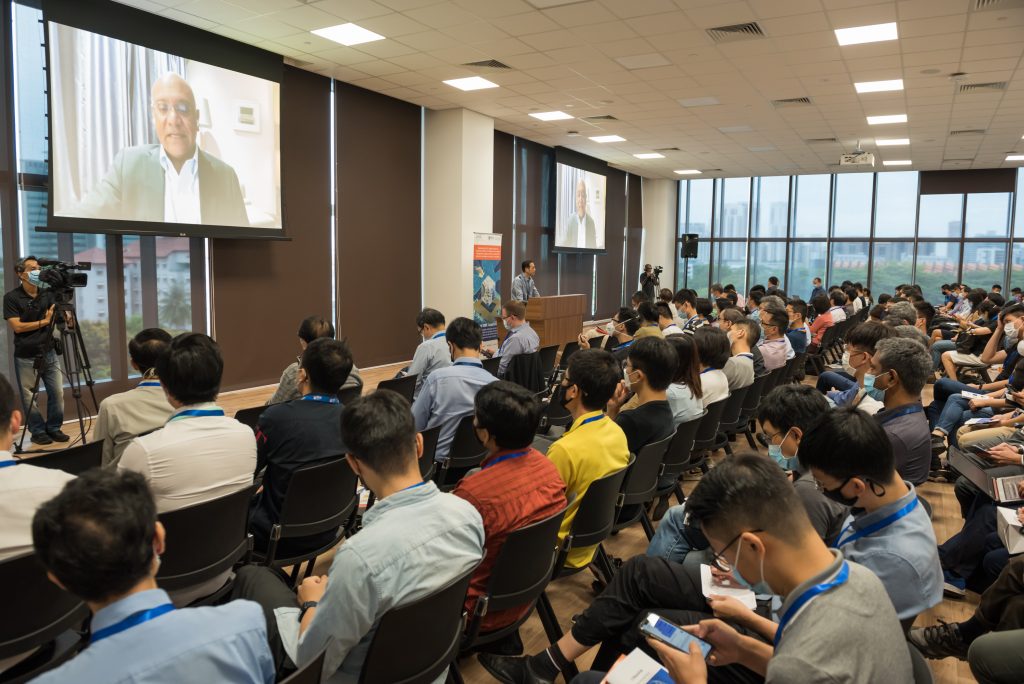
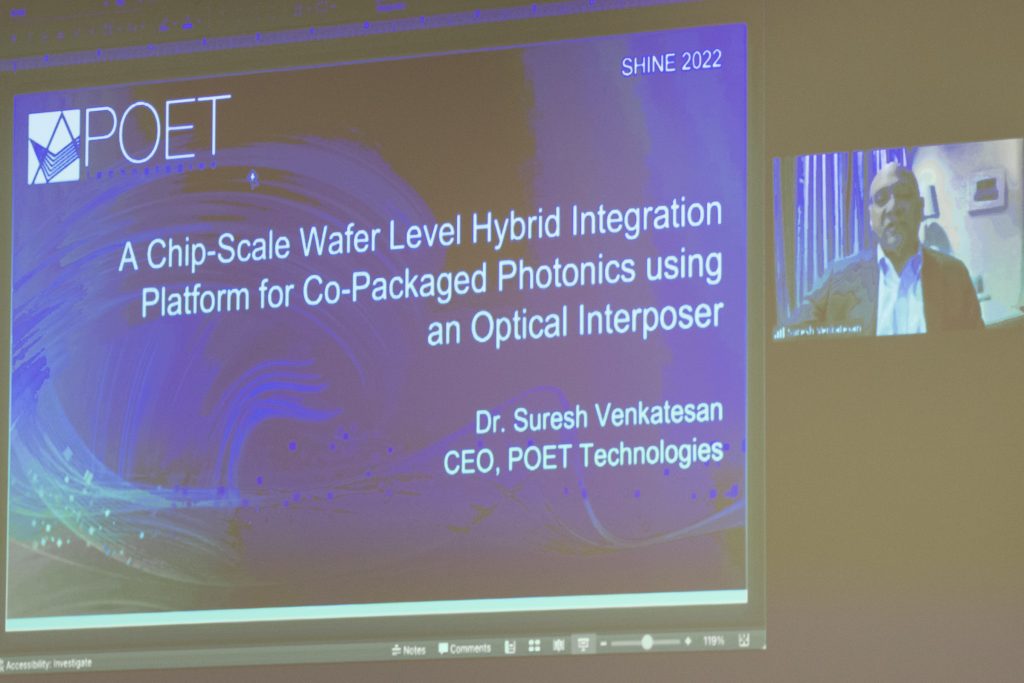
Followed on keynote topic was substrate engineering for microelectronics by Mr Guillaume Besnard. He shared that AIoT and IoT markets have a high growth potential, but are fragmented among many industries. Mr Besnard was optimistic that engineered substrates are well positioned to support the development and deployment of high growth areas such as 5G, AIoT, and electrical vehicle.

Prof Ahmed shared a very new and cost-effective additive manufacturing technology for nanoelectronics that can enable the industry to leverage novel properties of nanomaterials and their applications. The new technology costs one to two orders of magnitude less than the current conventional semiconductor manufacturing. Prof Lim of NUS announced that SHINE centre will be equipped with state of the art equipment by early 2023.

Mr Chin Jiann Min presented on challenges of advanced packaging failure analysis and the trend to enable functionality diversification with next generation packaging through stacking and “dis-integration”. He concluded his presentation with several insightful case studies.
Prof Philip Wong delivered the next keynote on 3D MOSAIC (MOnolithic Stacked Assembled IC) of N3XT Chips. He expressed that the prospect is in abundant-data computing and for innovation beyond chip level.
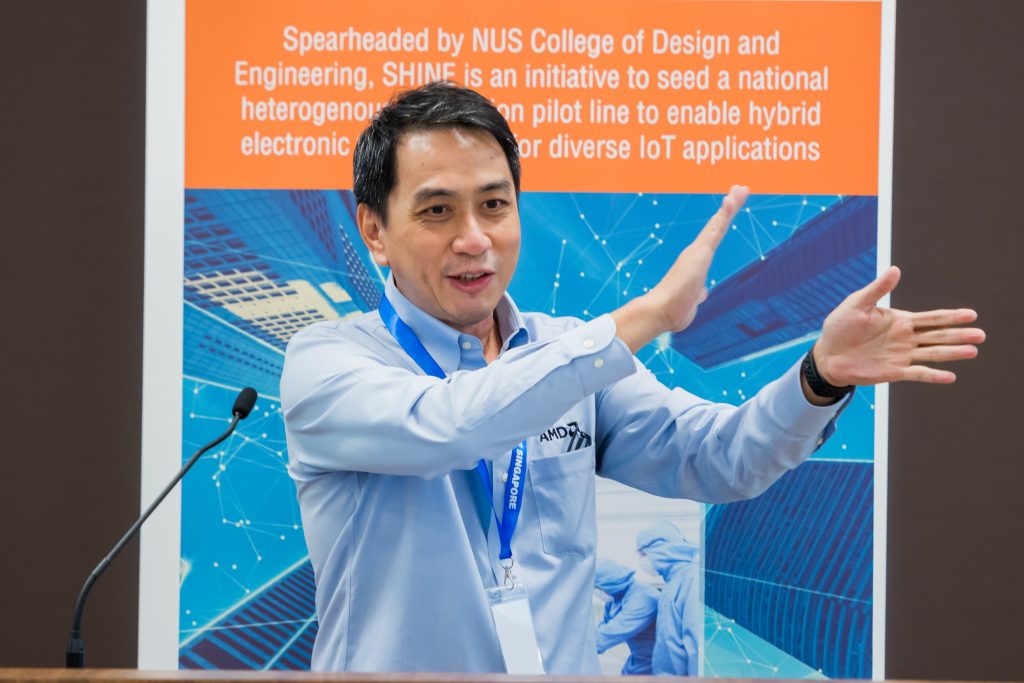

Prof Takao continued with his topic on stretchable, ultrathin, conformable and biocompatible next-era electronics in robotics and medical applications. He enlightened on the frontiers of tomorrow for wearable electronics being smart apparel, sensor patch and skin electronics.
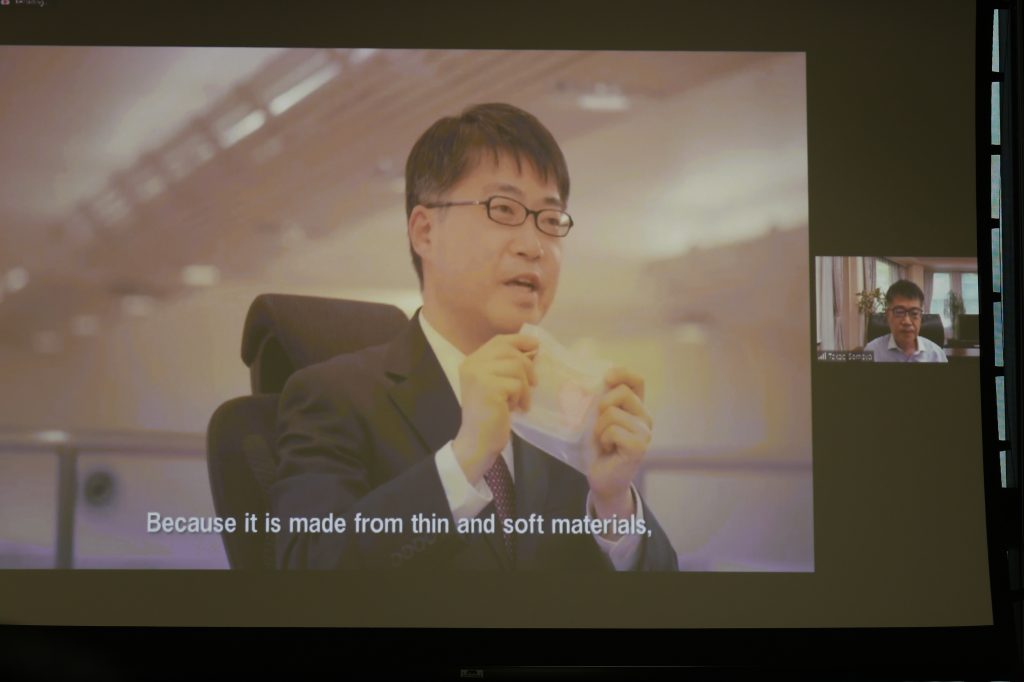
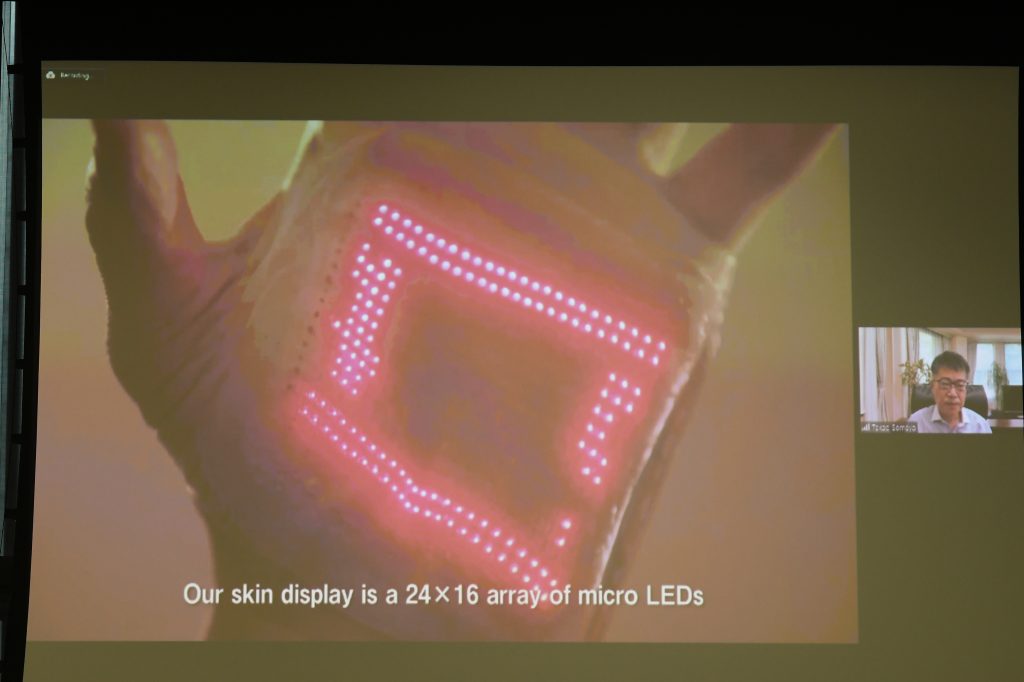

Dr Thomas spoke on high-value problems in the semiconductor industry for enhancing BEOL metallization and obstacles in advanced patterning schemes.
Dr Vincent enlightened on promising RF technologies and examples of RF frontend subsystem that can be potentially enabled by them.

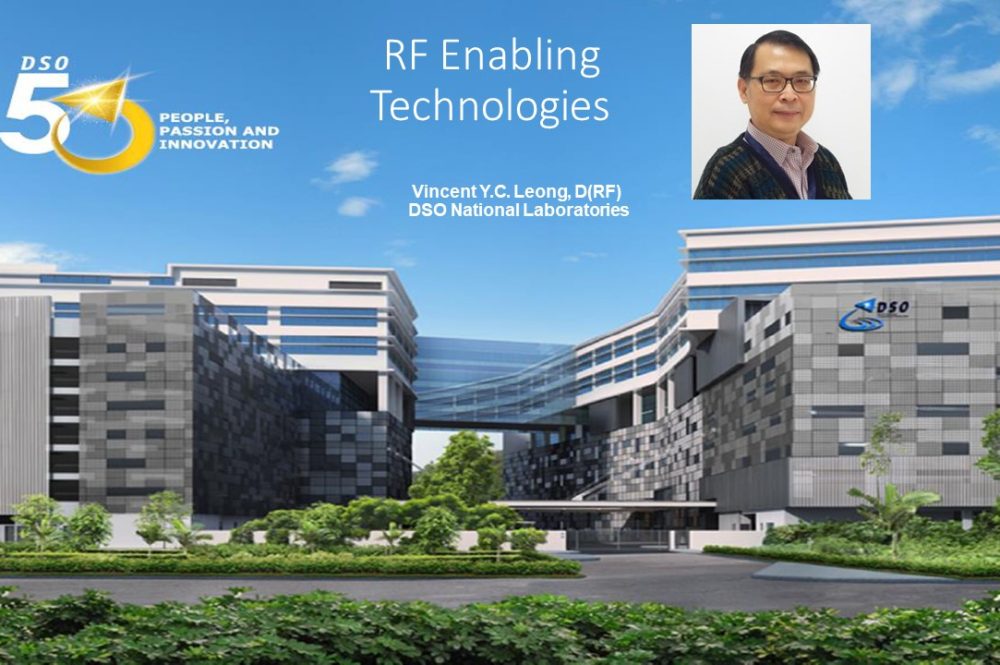
Dr Surya Bhattacharya communicated on System-in-Package Integration for Diverse Applications, a rich area for product-driven technology research and development.
Our last speaker of the day, Mr Markus discussed about future integration technologies for high-end automotive electronics. He addressed on some solutions/strategies to fulfil the requirements of high-performance computing connecting heterogeneous integration as a robust contributor with their challenges and possibilities.



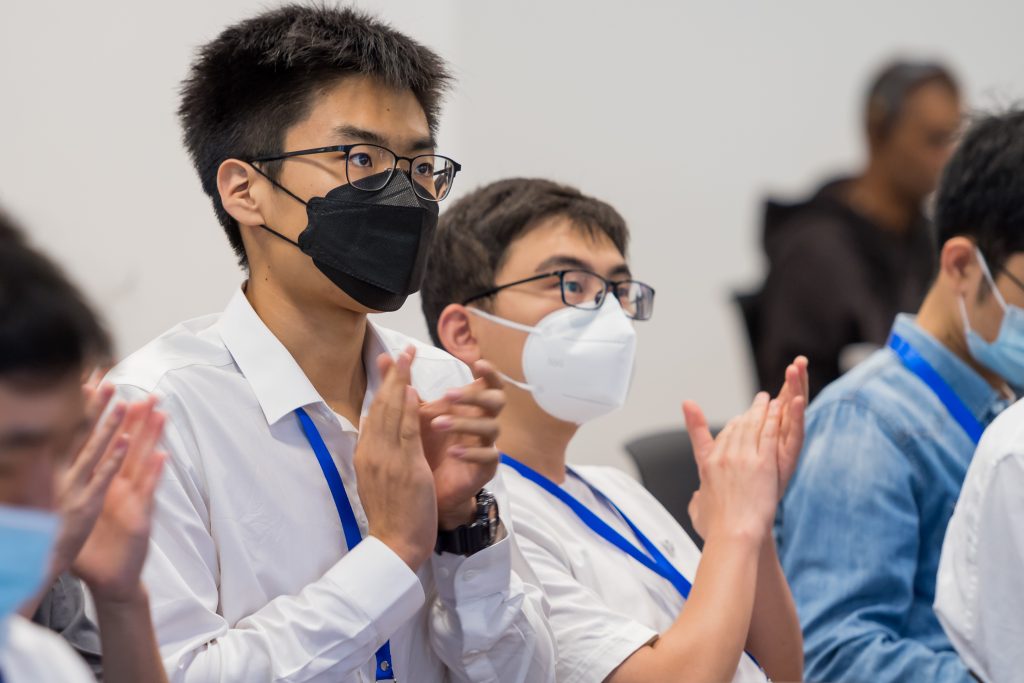
Professor Lim Yeow Kheng shared the latest state-of-the-art equipment and BEOL capabilities for SHINE lab at NUS E6NanoFab during lunch break. Professor Chen Xiaodong shared the capabilities of the new SHINE Centre at Nanyang Technological University, Singapore.
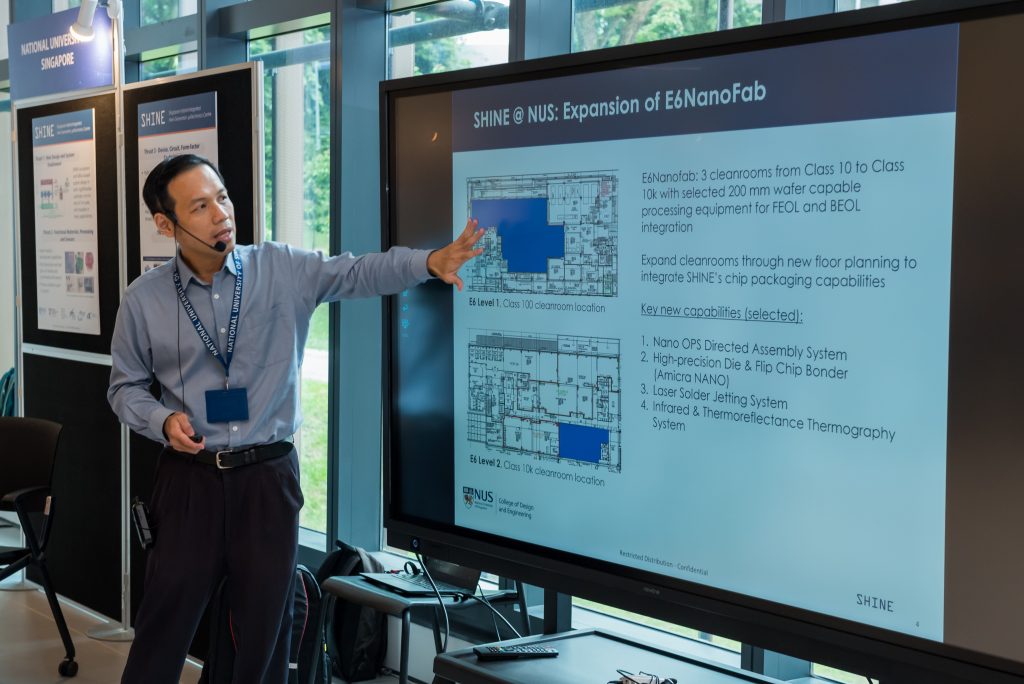
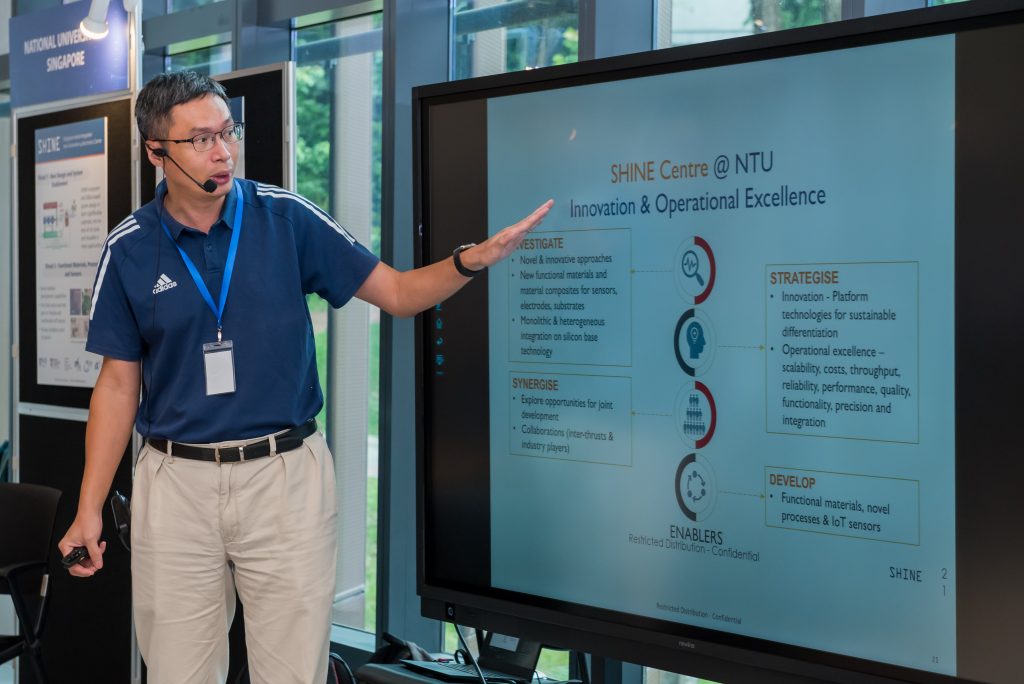
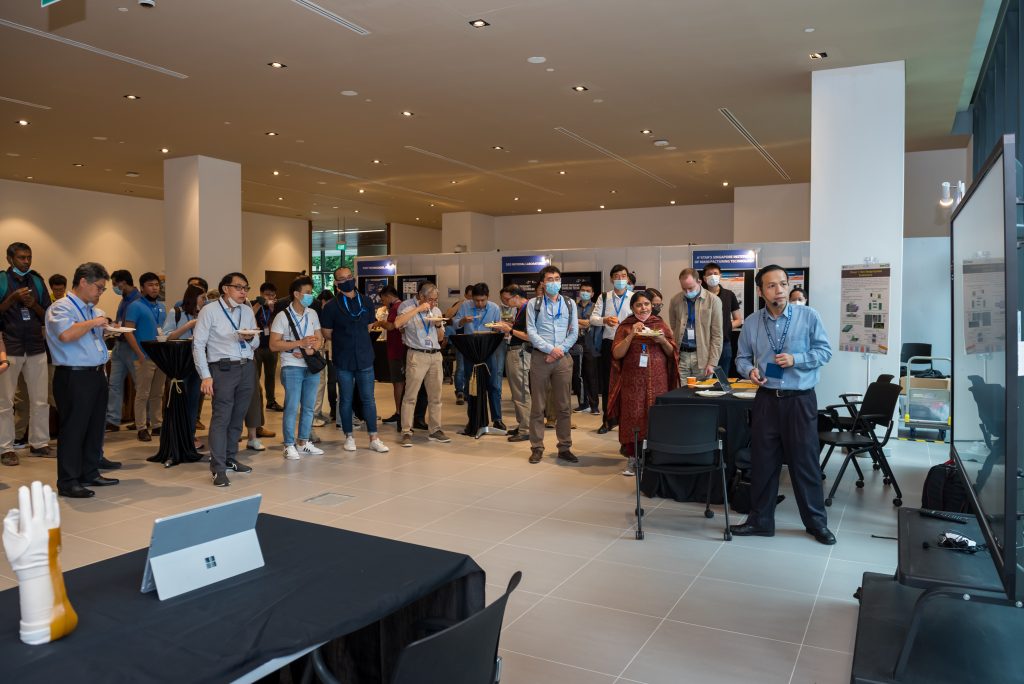
During breakfast, lunch and breaks, the attendees viewed exhibits highlighting the latest innovations and advanced technologies developed by researchers from NUS, NTU, A*STAR, SIMTech, Continental and POET Technologies. The exhibition provided attendees an avenue to engage in in-depth technical discussions and exchanges with the academia and industry exhibitors at the event space.
The event ended successfully at 5 pm and set the momentum for an inaugural technical workshop the following day on 1 July 2022 which was opened only to SHINE consortium members and industry partners.
To find out more about the speakers and synopsis of their presentations, click here.
Partnership Launch Video
In the video, partners like POET Technologies, SOITEC, Continental and DSO shared about their motivation and expectation of the Hybrid-Integration Technology research. They were excited to be part of SHINE research partnership ecosystem to develop high talent pool for advanced microelectronics industry in Singapore.
- Home
- Partnership Launch and Technical Seminar
Singapore Hybrid-Integrated Next-Generation μ-Electronics (SHINE) Centre
- Block E6, #E6-5-3, 5 Engineering Drive 1, Singapore 117608
- +65 6601 8522
- shine@nus.edu.sg

